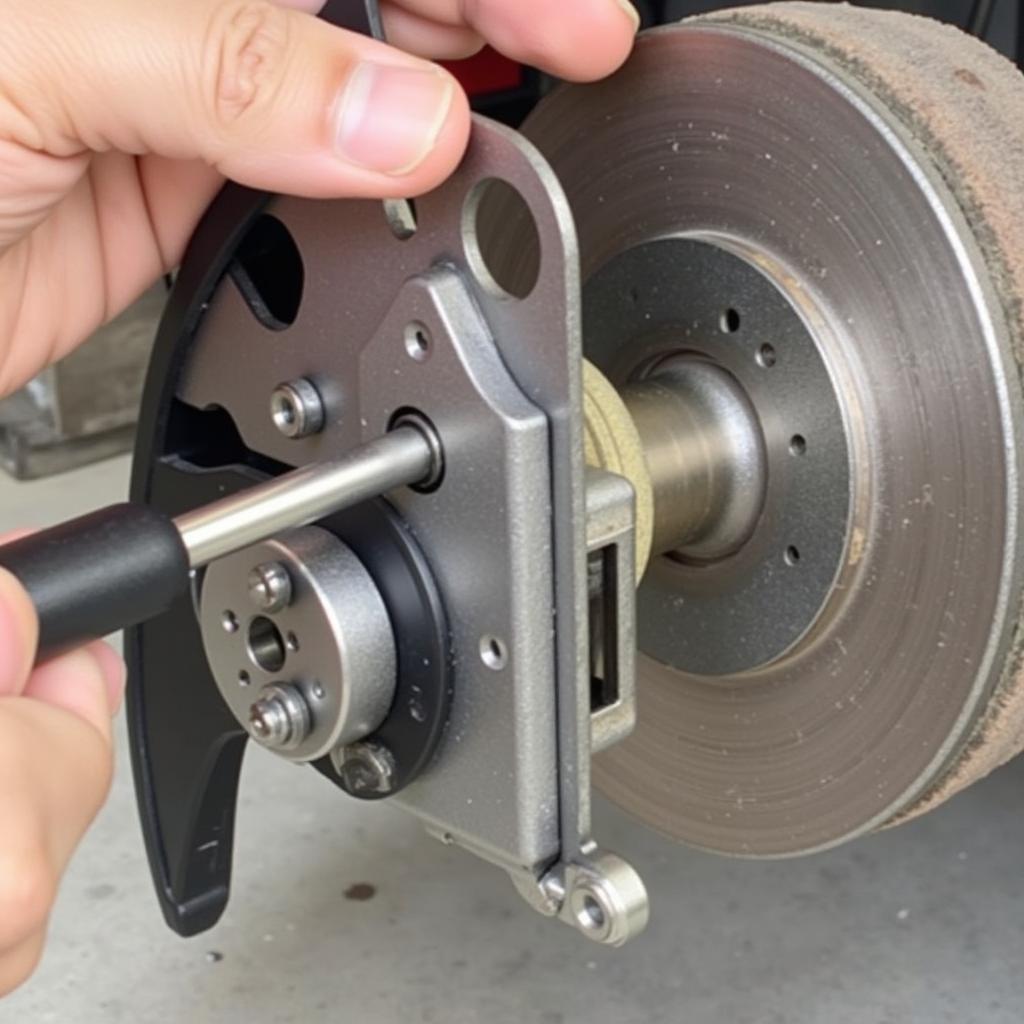Understanding the ER-825 Warner brake and its air gap setting is crucial for optimal braking performance and safety. This critical component influences the responsiveness and effectiveness of your braking system. An incorrectly set air gap can lead to a range of issues, from reduced braking power to premature wear and tear.
What is the ER-825 Warner Brake Air Gap?
The air gap refers to the distance between the brake shoe and the drum when the brakes are released. This gap is essential for proper brake operation. The ER-825, a common type of electric brake often used in trailers and RVs, requires precise air gap adjustment to function correctly. Too small a gap can cause the brakes to drag, leading to overheating and excessive wear. Conversely, too large a gap can result in delayed braking and reduced stopping power.
Why is the Correct ER-825 Warner Brake Setting Air Gap Important?
Maintaining the correct air gap is paramount for several reasons:
- Safety: A properly adjusted air gap ensures reliable and responsive braking, minimizing stopping distances and preventing accidents.
- Performance: The correct air gap optimizes braking performance, providing consistent and predictable stopping power.
- Longevity: By preventing unnecessary friction and heat buildup, the correct air gap extends the life of your brake shoes, drums, and other components.
- Fuel Efficiency: Dragging brakes caused by an incorrectly set air gap can significantly reduce fuel efficiency.
How to Set the ER-825 Warner Brake Setting Air Gap
Setting the air gap on an ER-825 Warner brake requires a few tools and careful attention to detail. Here’s a step-by-step guide:
- Gather your tools: You’ll need a flathead screwdriver, a brake adjusting tool (often included with the brake assembly), and a feeler gauge.
- Access the adjusting mechanism: Locate the access port on the back of the brake assembly. This is usually a small rubber plug or a metal cover.
- Loosen the adjuster: Insert the flathead screwdriver into the access port and rotate the star wheel adjuster until the brake shoes are fully retracted against the anchor pins.
- Adjust the air gap: Insert the appropriate feeler gauge (consult your owner’s manual for the specific gap measurement) between the brake shoe and the drum. Use the brake adjusting tool to turn the star wheel until the feeler gauge drags slightly when pulled.
- Check the other wheel: Repeat the process on the other brake assembly. It’s crucial to ensure both brakes are adjusted identically.
- Verify the adjustment: Rotate the wheel by hand to ensure it spins freely without any dragging. If the wheel drags, re-adjust the air gap.
 Adjusting ER-825 Air Gap
Adjusting ER-825 Air Gap
Troubleshooting Common ER-825 Air Gap Issues
- Dragging brakes: If the wheel drags after adjusting the air gap, double-check the adjustment and ensure the brake shoes are not seized or binding.
- Weak braking: If the brakes feel weak, the air gap may be too large. Re-adjust the gap to the manufacturer’s specifications.
- Uneven braking: Uneven braking can be caused by an incorrect air gap on one wheel. Ensure both brakes are adjusted identically.
“Consistent and accurate air gap setting is the cornerstone of reliable braking,” says John Miller, Senior Automotive Engineer at BrakeTech Solutions. “Taking the time to perform this crucial maintenance task will not only improve safety but also extend the life of your braking system.”
How often should I check my ER-825 Warner brake air gap?
It is recommended to check your ER-825 brake air gap every 12,000 miles or at least once a year. However, more frequent checks might be necessary if you frequently tow heavy loads or drive in harsh conditions.
Conclusion
Properly setting the ER-825 Warner brake setting air gap is essential for safe and efficient braking. By following the steps outlined in this guide, you can ensure your brakes are operating optimally and extend their lifespan. Remember, regular maintenance and accurate adjustment are key to maintaining a reliable braking system. Don’t neglect this critical aspect of your vehicle’s safety.
FAQ
- What tools do I need to adjust the ER-825 air gap? You’ll need a flathead screwdriver, a brake adjusting tool, and a feeler gauge.
- How often should I check the air gap? Every 12,000 miles or at least once a year.
- What happens if the air gap is too small? The brakes may drag, leading to overheating and premature wear.
- What happens if the air gap is too large? Reduced braking performance and increased stopping distances.
- Where can I find the correct air gap specification for my ER-825 brake? Consult your owner’s manual or the manufacturer’s website.
- Can I adjust the air gap myself? Yes, following the steps outlined in this guide.
- What should I do if I’m not comfortable adjusting the air gap myself? Consult a qualified mechanic or brake specialist.



